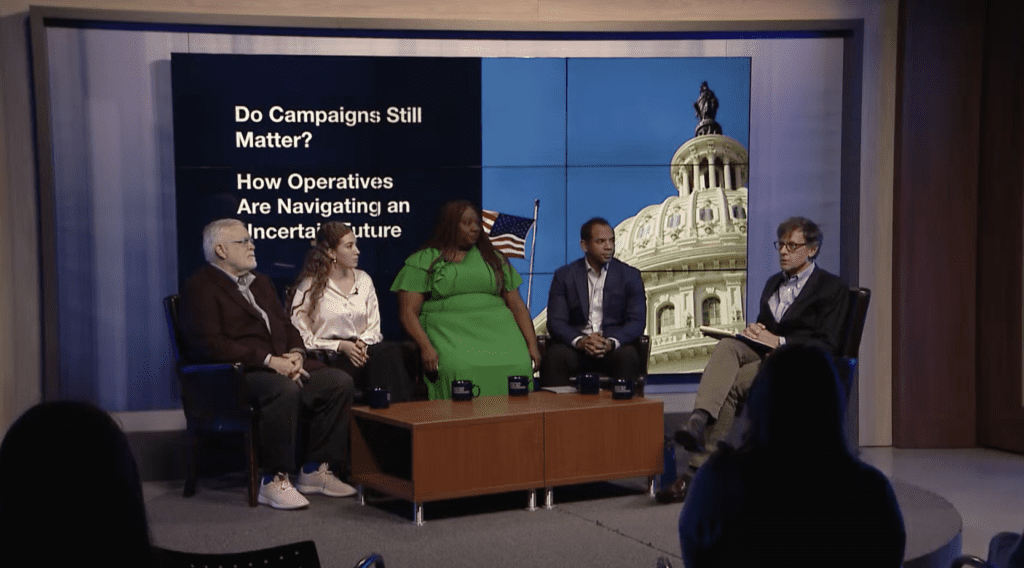What Will Define Next Year’s Election: Education and Mobilization

Next year’s presidential election is already being defined by the use of generative artificial intelligence tools, but it may be old school campaign tactics that actually make the difference between winning and losing.
Part of the reason why canvassing and relational organizing are going to be so important, at least for Democrats, are because they’re some of the most effective ways to reach young voters and voters of color.
Recent polling has shown young voters aren’t as enthusiastic for President Biden as they were back in 2020. Latinos have concerns about Biden’s handling of the economy. Meanwhile, a recent survey found that 20 percent of Black voters would consider backing Donald Trump in 2024, which would represent an eight percent increase over the former president’s share of Black voters in 2020.
“It [2024] is going to be about people being willing to go into their own communities and do that deep canvassing work and talk to their parents and say, ‘No, seriously, you need to stand in line [and vote], and it’s worth it,’” said Maya Rupert, who managed Rep. Julian Castro’s presidential campaign.
Speaking at a panel hosted by C&E and The George Washington University’s School of Media and Public Affairs on Dec. 6, Rupert noted that the challenge for Democratic campaigns is to translate how legislation like the CHIPS and Science Act can impact average voters. The role of the campaign now, she said, is “mobilizing, education, arming people that are going to go into their communities and get people to turnout.
“What we hear is that people in communities want to hear from people in their communities.”
Republicans will also need to invest in neighbor-to-neighbor communication tactics, according to Mark Campbell, CEO of Intellz and manager of Glenn Youngkin’s 2021 Virginia gubernatorial.
“There’s so much anger and vitriol on the edges. … It’s going to be a velvet glove, soft touch that wins this,” he said.
He added: “Neighbor to neighbor is going to more important than anything has ever been.”
Campbell noted that even before the deluge of contrast advertising starts, both Biden and Trump are starting from unpopular positions.
“The biggest question that nobody really wants to talk about is, the Republican Party has a huge problem: 20 percent of traditional Republican voters will note vote for Trump, and you’re starting to see about the same percentage of Democratic voters — young, Latino, Blacks, union members — not be willing to vote for Biden,” he said, pointing to a “magic middle” of 4-5 percent of voters who will decide the White House election next year.
“They’re going to call the shot this time,” said Campbell.
Given that such a small slice of the electorate is actually perusable going into the presidential, Doug Thornell, CEO of SKDK, predicted that campaigns could spend as much as 35-40 percent of their budgets on their digital programs.
“It’s going to be an effort to turnout both parties’ bases and then to identify that sliver of the electorate that probably doesn’t like either of the nominees and persuade them to vote for [either] Biden or Trump,” Thornell said.
He noted that Biden’s campaign has already begun messaging to the shaky parts of his voting coalition — namely young voters and voters of color.
“They have to treat those voters like they would treat suburban voters,” he said. “As you would consider a persuasion voter where you deliver content, advertising to them very early on.”
Still, even Thornell, who also heads the Democratic firm’s advertising department, concedes in-person contact will be a defining tactic in 2024 — in sharp contrast to the last presidential, which was largely virtual.
“This race is going to be, from top to bottom, incredibly close,” he said. “There will be an intense effort to communicate and contact voters in-person.”
